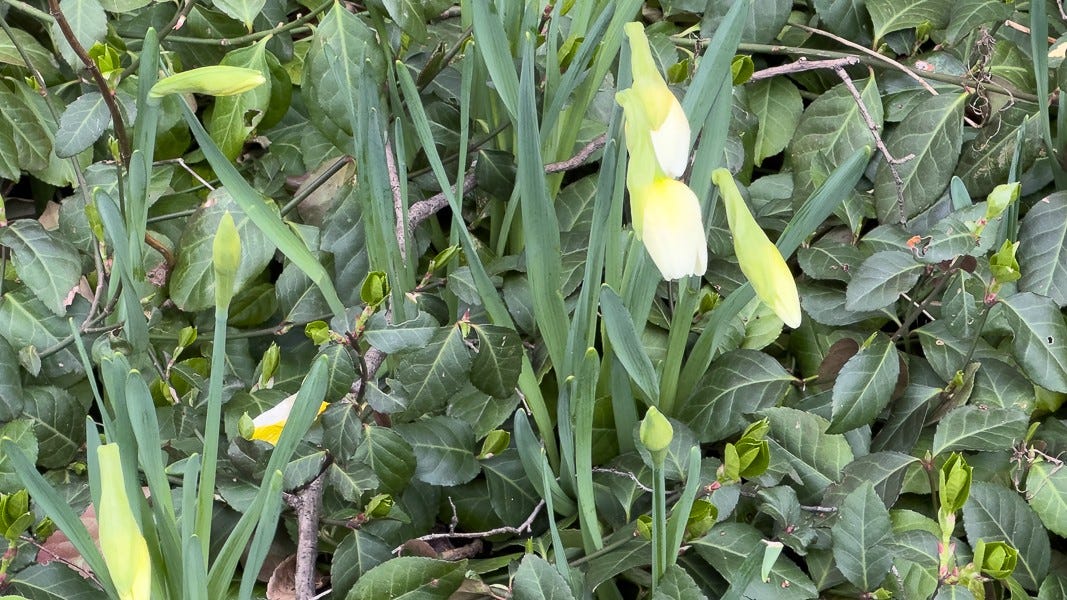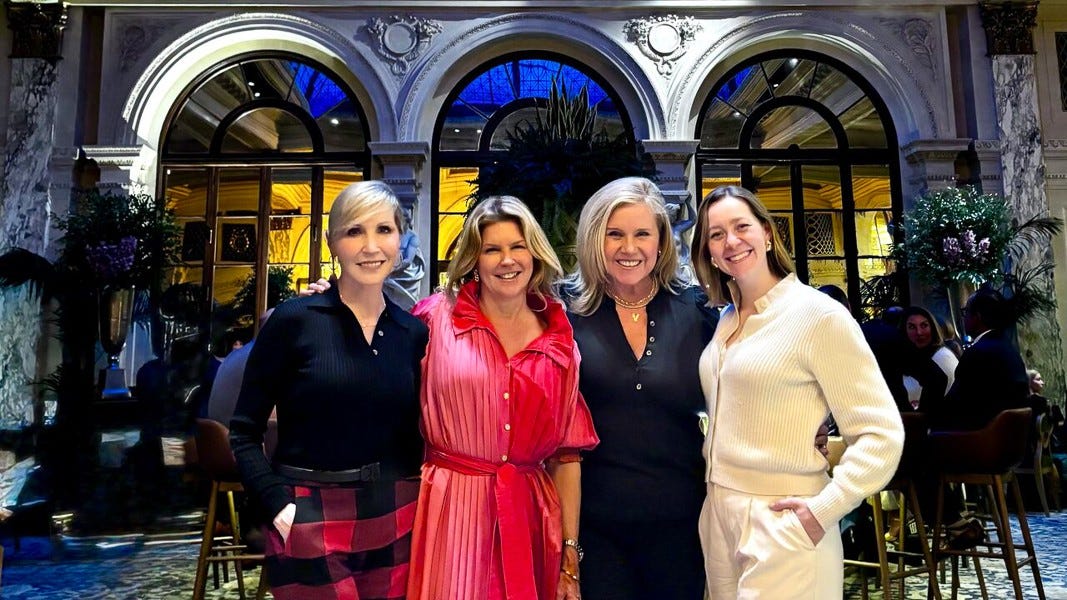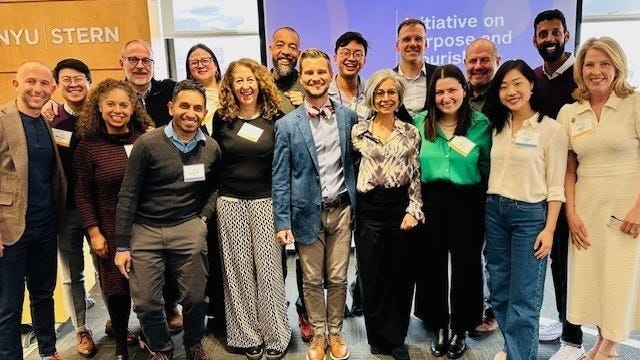This week, as I walked through Riverside Park, I couldn't help but notice the daffodils beginning to bloom, just as they did during the early days of the pandemic five years ago. Seeing these optimistic flowers brought me back to a time when the world slowed down, and I found myself paying closer attention to the little things. As I reflected on the metamorphosis of the daffodils - from sprout to bud, to emerging flower, to full bloom - I realized that their journey mirrors the path of leadership growth. This transition can be broken down into three key insights: the shift from individual contributor to manager, from manager to leader, and from leader to senior executive.
We sprout as individual contributors; we are recognized and rewarded based on our accomplishments. While we may work as part of a team, our efforts primarily determine our success. This mindset is ingrained in us from our earliest school days, where we are praised for writing an excellent paper or acing a test. However, as we transition into a managerial role, our focus must shift to enabling and supporting our team's success. We are still recognized for our team's accomplishments, but our primary responsibility becomes distributing effort and guiding others to achieve collective goals. This transition can be challenging, as we must learn to step back from the hands-on work and trust in the abilities of our team members.
The next significant leap is emerging from manager to leader. As leaders, we must look beyond the immediate tasks and focus on setting our organization's vision, strategy, and culture. We are no longer solely responsible for the day-to-day work; instead, we must inspire, motivate, and empower our teams to take ownership of their roles and drive success. This transformation requires a shift in mindset from tactical execution to strategic thinking and a willingness to embrace vulnerability and lead with authenticity. By fostering a culture of trust, transparency, and psychological safety, we create an environment where our teams can thrive and reach their full potential.
Finally, we flower in the transition from leader to senior executive demands an even greater level of adaptability and vision. At this stage, our impact extends beyond our immediate team or department. We must navigate complex stakeholder relationships, anticipate future challenges and opportunities, and make decisions that will shape the long-term success of our organization. This requires a deep understanding of our industry, a keen strategic mind, and the ability to lead with empathy and resilience in uncertainty. As senior executives, we must also serve as role models, embodying the values and behaviors we wish to see in our teams and cultivating the next generation of leaders.
In life and leadership, growth is a continuous journey of transformation, much like the metamorphosis of the daffodils in Riverside Park. As we navigate the transitions from individual contributor to manager, manager to leader, and leader to senior executive, we must embrace the challenges and opportunities that come with each stage. By staying attuned to our development and the needs of those we lead and love, we can cultivate the skills, mindset, and wisdom necessary to thrive in an ever-changing world. Just as the daffodils emerge from the ground each spring, renewed and ready to bloom, so too can we emerge from each stage of our leadership journey, stronger, wiser, and better equipped to make a positive impact on those around us.
With love, gratitude, and wonder,
Scott
Shatterproof: How to Thrive in a World of Constant Chaos by Tasha Eurich
My friend Tasha Eurich has written a compelling book titled "Shatterproof: How to Thrive in a World of Constant Chaos." In this timely guide, she challenges the notion that resilience alone is sufficient to navigate life's upheavals. Drawing on cutting-edge research and her struggles, Tasha argues that instead of merely bouncing back from setbacks, we can harness them for personal growth and transformation.
Through practical tools and insights, Tasha offers a scientifically supported system to help readers reclaim their best selves, uncover unmet needs, and turn stress into strength. She emphasizes the importance of finding peace in the present while preparing for the future. Ultimately, "Shatterproof" encourages us to embrace the idea that the very things that break us can also uniquely remake us, enabling us to thrive in the face of adversity.
The Leadership Path We Walk Together: How a Weekend Showed me What Leadership Legacy Truly Means by Connie Dieken
My friend Connie Dieken shared a beautiful reflection on Marshall Goldsmith's 76th birthday celebration organized by the 100 Coaches Agency. Her article highlights three essential leadership principles exemplified by Marshall. She describes how his practice of conducting coaching sessions while walking side-by-side in natural settings dismantles hierarchies and fosters authentic connection. She also notes his intentional simplicity, symbolized by his signature green polo shirts - a deliberate choice that conserves decision-making energy for more meaningful work.
What resonates most in Dieken's piece is her observation that Marshall's true legacy exists in the community he's fostered, not his bestsellers or coaching accolades. This was evident in the camaraderie she experienced with Mary Olson - Menzel, Michelle Johnston, and Jacquelyn Lane as they extended their weekend for deeper connection. As Dieken concludes, transformational leadership isn't a solitary journey but one traveled together, with authentic human connection at its core.
Flourishing at Work Isn’t Soft—It’s Strategic by Betsy Wills
Betsy Wills recently attended the inaugural convening of the NYU Stern | Initiative on Purpose and Flourishing as a member of its Strategic Advisory Board. The event brought together various leaders and thinkers to explore the theme of "Purpose and Flourishing in the Five-Generation Workplace." Betsy highlighted that as lifespans increase, our relationship with work must evolve to include multiple chapters, reinventions, and moments of redefinition, emphasizing the importance of career wellness.
According to Betsy, career wellness involves finding personal fulfillment, financial stability, professional growth, work-life integration, and self-knowledge. She shared insights from thought leaders like Jerry Colonna, who spoke about the importance of leaders seeing themselves clearly and addressing their own unhealed wounds, and Suzy Welch, who emphasized the role of love and authenticity in building workplaces where people feel valued. Betsy concluded by stressing that both individuals and institutions share responsibility for fostering flourishing in this new era of work.













